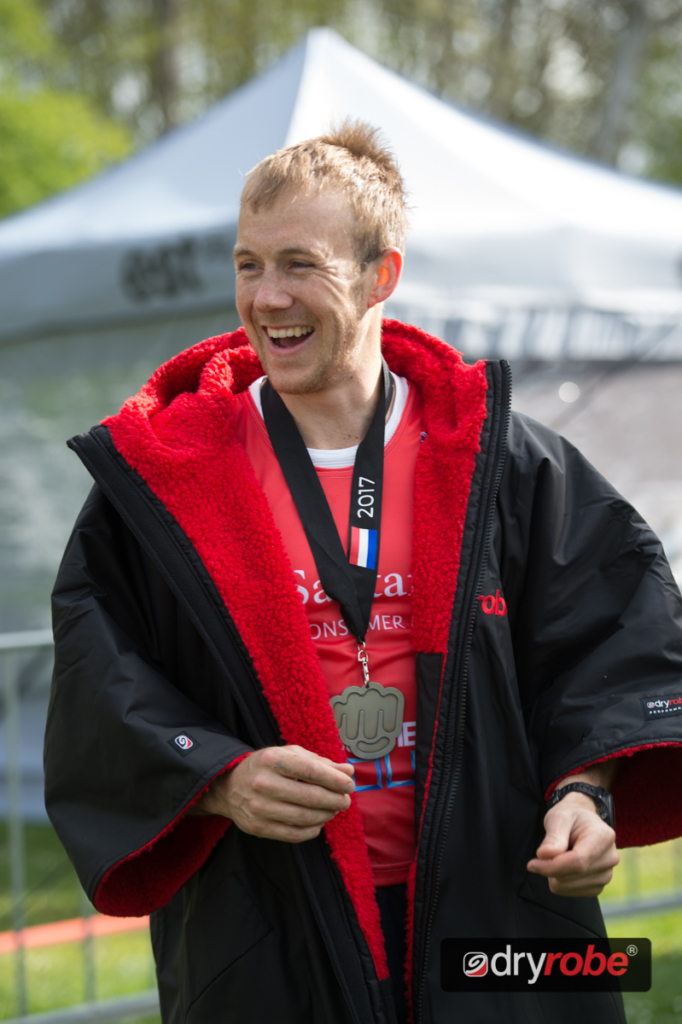Early in the season, Evan Perperis wrote two related pieces on OCRWC trying to answer the following questions: can an OCR race be too hard and can OCR championship races be too hard? Go have a read if you like, although they aren’t prerequisites for what follows.
These articles were brought to my attention via a message from none other than multiple time OCR World Champion Jonathon Albon, in which he outlined his thoughts on the matter.
I’ve included Jon’s take on the matter – I am lucky enough to know him, and he is more than just a pretty face and ridiculous athletic ability: he has what I call “rare common sense.” That’s just a fancy way of saying that he and I agree on most things OCR.
What is Difficulty?
The biggest problem with any discussion like this is that it’s so difficult to define difficulty. In fact there are many parameters that need to be defined, as the sport is so broad in terms of length, terrain, obstacle number and difficulty, and level of competitor. To his credit, Evan addressed these fundamental issues in his pieces and, in a nutshell, here is what he wrote:
…actually it’s really complicated and depends on the type of race, who the targeted consumer is and what do you mean by too hard. For purposes of this article, I’m referring to obstacle difficulty and not referencing things like terrain.
Before we start, the standard definitions I’m using are:
- Elite: Qualified for Pro Wave of OCRWC, but may not choose to run in the pro wave.
- Competitive: Qualified for Age Group of OCRWC.
- Open: Didn’t qualify for either.
While I think most people’s gut reaction for an OCR Championship Race is it should be the hardest of all since it is the championship, I would disagree from both a racer perspective and from a business perspective.
That last point is what I want to expand on: should a championship race be harder than the regular season? In my opinion, the correct answer is a resounding “no.”
What defines a championship race?
I think we can all agree that simply putting on a race and calling it the “<Insert Name Here> Championship” is not going to cut it. Calling your local mud run the National or World championship is completely meaningless, so there needs to be something more that sets a race apart as being a legitimate championship. Many people would say it’s difficulty, but I don’t think that flies either, and here’s why.
Exhibit A: The hardest official marathon in the world is likely the Everest Marathon. The winning time last year was 4:02, which is almost exactly twice as long as the best times for more “traditional” marathons. It is clearly the toughest marathon in the world, so why isn’t it the World Championship?
Exhibit B: In the world of Ironman, there are many that are physically much more challenging than the Hawaii Ironman, but none of them are the World Championship. Check out the infamous Norseman Xtreme Iron Distance race. Their welcome – “This is not for you. Nothing personal. But it’s not.” – is reminiscent of the sadistic and all-but-impossible Barkley Marathons. The winning times at last year’s Norseman Xtreme for women and men were 13:13:59 and 10:47:55. Compare that to the World Champs winning times of 8:26:18 and 7:52:39. It's pretty clear which one was harder.
Obviously difficulty alone doesn’t make a championship race. So what does? Well, I think that putting the focus on the actual course misses the mark completely. In fact, a proper championship should be very comparable to all the other races held during the year. The knee-jerk argument to that sentiment is that if it's similar to the qualifying races, then it is “just another OCR”? But would that be the case?
Absolutely not. It wouldn't be just another OCR event because of the field of racers competing in it.
Athletes Define Championships
The Hawaii Ironman is quantitatively no different from any other Ironman and is regarded by many as an easier course. It draws by far the strongest and deepest field of racers. That in my mind is what defines a championship race: not facing the toughest course, but facing the best racers.
There is technically nothing preventing you or I from trying to compete at the World Championships in either the marathon or Ironman triathlon. As with OCR, both these sports see non-elite age groupers and weekend warriors racing on the same course as the World Championship contenders.
The ultimate examples are the IAAF Track and Field World Championships and the Olympic Track and Field competitions. They are by rule 100% exactly the same as every other track meet out there. The things that sets them apart are the high qualifying standards and the resultant field of the world’s best athletes. That’s it, that’s all.
What About OCR Championships?
Bringing this back to OCR specifically, the championship races should be pretty much like the regular-season events in terms of distances, obstacle selection/density, etc. This is what every other sport does. What makes a championship race is who shows up. It's the level of competition that makes a championship harder and worthy of the name, not arbitrarily trying to get completion rates down below 25%.
Ultimately, it is nothing more than athlete buy-in and participation that defines any championship event. Relevant examples are the World OCR Federation championships that have been held recently. None of the top OCR racers attended and as a result, the top-10 at each event was mostly a list of the best regional athletes. This is NOT meant to disrespect any of the very capable racers who took part: all they can do is race their hardest and beat whoever is there. However, any OCR championship without Atkins, Webster, Albon, Mericle, and so forth is just another race. They can say they are the World Champs until they are blue in the face, but nobody will consider them such.
If you want to draw the best racers, and I’d argue that making the championship courses radically different and ridiculously hard would actually have the opposite effect, as racers used to contending for top placings would decide not to bother. Why fly halfway around the world to do a race that includes a 5 mile swim, upriver, carrying a sandbag wrapped in barbed wire? Or one that takes place at extreme altitude, or that is 300 miles long, or that features 300 never before seen obstacles?
What we need are races that will have the top racers going head-to-head, because that is the only thing that can crown a legitimate world champion.
So what does one of those top racers, Jonathon Albon, think?
“Should the OCRWC be harder?”
This statement is as vague as saying that a piece of string should be longer, but you are not even sure if its string – it could be a cable or some twine or something. How do we define hard? There are loads of ways to make an obstacle race harder: heavier carries, colder temperatures, more hills, more mud, more technical obstacles – to name but a few. Every race can implement any number of these but will usually end up top loading with one or the other. The problem with a race such as OCRWC is that it has to find that impossible balance.
So, we have the runners saying ‘if you think it is too easy then just do it faster.’ No one is suggesting that Mo Farah finds a 5km too easy so we should add some monkey bars. He simply runs faster, which in itself makes doing even the simplest task more difficult. Or, we have the big guys saying we need heavier lifts, like deadlifting a small car. I am pretty sure some of the Scandinavians would prefer the course to be on snow so they can use some skis. I get the feeling most people are talking about more technical ninja warrior style obstacles though, mainly because these are in fashion and they are far more pleasant than getting hypothermia or a 3-mile double sandbag carry.
But then what type of technical obstacles do you want? Stereotypically, a North American athlete wants lock-off grip strength style of technical, a Scandinavian wants more swinging and jumping around dynamic stuff, there may even be a few that want hardcore balance beams and slacklines. A major problem is anyone who has an opinion is likely to have a vested interest in the outcome, which will likely be the course suiting them more. To find an answer to the ‘harder’ question requires you to answer a far larger and more difficult one: “What type of fitness or attributes should an obstacle race reward, and in what ratio?”
Thus far, Adrian and his team have tried to look at all the obstacle races around the globe and create an amalgamation of styles. From the muddy hypothermic Tough Guy to the double sandbag Spartans to the forearms of steel Warrior Racers. They have then noted that obstacle racing is a mass participation sport, unlike bobsledding or something, which hardly anyone does, so it has to be manageable for at least 80% of people. Obviously, the OCRWC has never been perfect, but so far it seems to have been successful. What more can we ask for?
Most sports have changed from their original format to make them more spectator friendly. This usually moves the sport away from its origins and, in my opinion, makes it worse. With this battle to face in the future, it’s a shame people are already trying to influence the sport on their own accord.
Disclaimer: The viewpoints expressed by the authors do not necessarily reflect the opinions, viewpoints and official policies of Mud Run Guide LLC, or their staff. The comments posted on this Website are solely the opinions of the posters.




I truly believe that all these events are businesses first and foremost. To survive and thrive, the top 50 people in our OCR community are not enough to ensure longevity of such events.
Competitors of all levels should envision a 40- 60% band retention rate at all races, including qualifying races, giving people hope that when they improve, they can be successful. If the masses that support all the races feel they are facing impossible challenges, they stop coming, and with their absence, so do the finances that support the races.
A championship race is something competitors must qualify for, so entry for these races is at a higher level of athleticism and skill levels. The same formula should apply: 40- 60% Band retention to keep the intermediate to elite MASSES coming to challenge themselves, not face “impossibles”. Making the Championships more difficult than a regular season race makes sense. Yet, remember:
It’s a business. Something we ALL want to see thrive & continue.